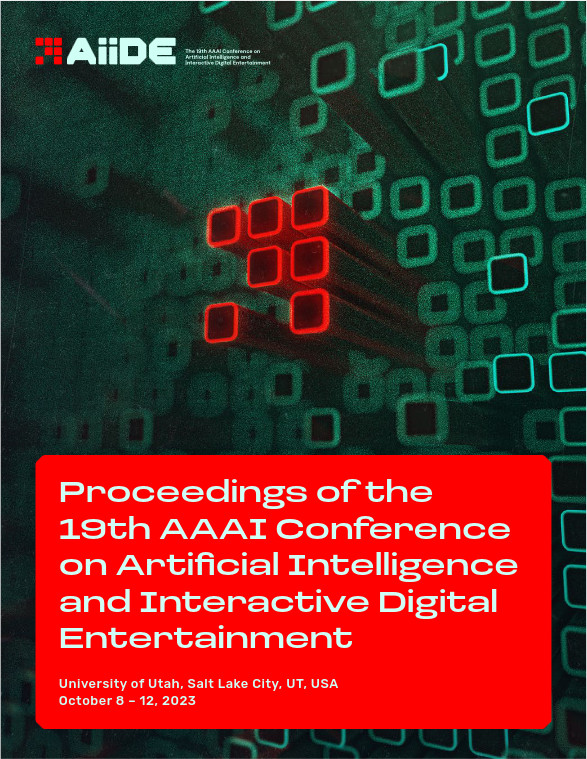Hierarchical WaveFunction Collapse
DOI:
https://doi.org/10.1609/aiide.v19i1.27498Keywords:
Procedural Content Generation, Wavefunction Collapse, Hierarchical Procedural Content GenerationAbstract
Video game developers are increasingly utilising procedural content generation (PCG) techniques in order to generate more content far quicker than if it were designed. Although promising, much of the successful work to date has been achieved in simple 2D environments or has required significant hand-designed effort. This is due to the difficult nature of defining plausible metrics, fitness functions or reward functions which can quantify the quality of generated levels. Our work aims to avoid this difficulty by utilising minimal human design to build up constraints, and generating diverse levels that maintain these constraints. We achieve this by hierarchically applying the recent WaveFunction collapse (WFC) algorithm. Our approach allows designers to specify larger-scale components, and additional constraints that are difficult to enforce using standard WFC. We empirically demonstrate that our approach does indeed incorporate these higher-level structures, and is more controllable than our baselines. Despite these benefits, our levels do not suffer from a lack of diversity. Finally, we illustrate the scalability and flexibility of our approach by applying it to both 2D and 3D domains.Downloads
Published
2023-10-06
How to Cite
Beukman, M., Ingram, B., Liu, I., & Rosman, B. (2023). Hierarchical WaveFunction Collapse. Proceedings of the AAAI Conference on Artificial Intelligence and Interactive Digital Entertainment, 19(1), 23-33. https://doi.org/10.1609/aiide.v19i1.27498
Issue
Section
Research Track Papers

